Gynecomastia is a common condition in men, characterised by the abnormal enlargement of breast tissue. This can be caused by a variety of factors, including hormonal imbalances, genetics, obesity, certain medications, and lifestyle habits.
Definition of Gynecomastia
Gynecomastia refers to the development of enlarged breast tissue in men commonly due to an imbalance between estrogen and testosterone levels. This leads to the proliferation of glandular tissue, resulting in a more feminine chest appearance. It can affect one or both breasts and may also cause tenderness.
Types of Gynecomastia
True Gynecomastia:
This involves the enlargement of glandular fibrous tissue commonly caused by hormonal imbalances.
Pseudo-gynecomastia:
This is due to the accumulation of fat in the chest area, often related to weight gain or obesity.
Following massive weight loss :
These patients are left behind excess loose skin and soft tissue giving the appearance of saggy breasts.
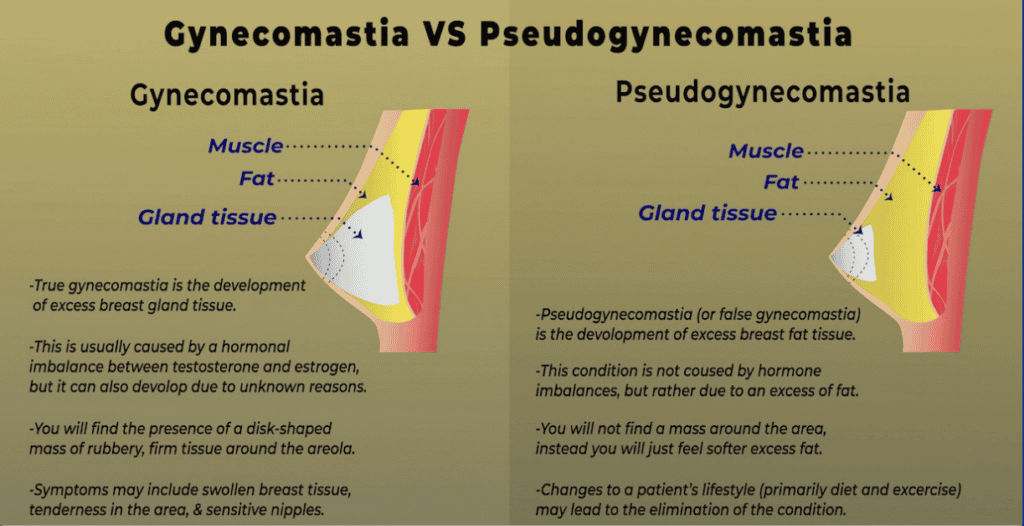
Different Grades of Gynecomastia
Gynecomastia is typically classified into different grades based on the severity of the condition:
Grade 1: Minor enlargement without excess skin.
Grade 2: Moderate enlargement without skin excess.
Grade 3: Moderate enlargement with extra skin.
Grade 4: Significant enlargement with excess skin and drooping, resembling female breasts.
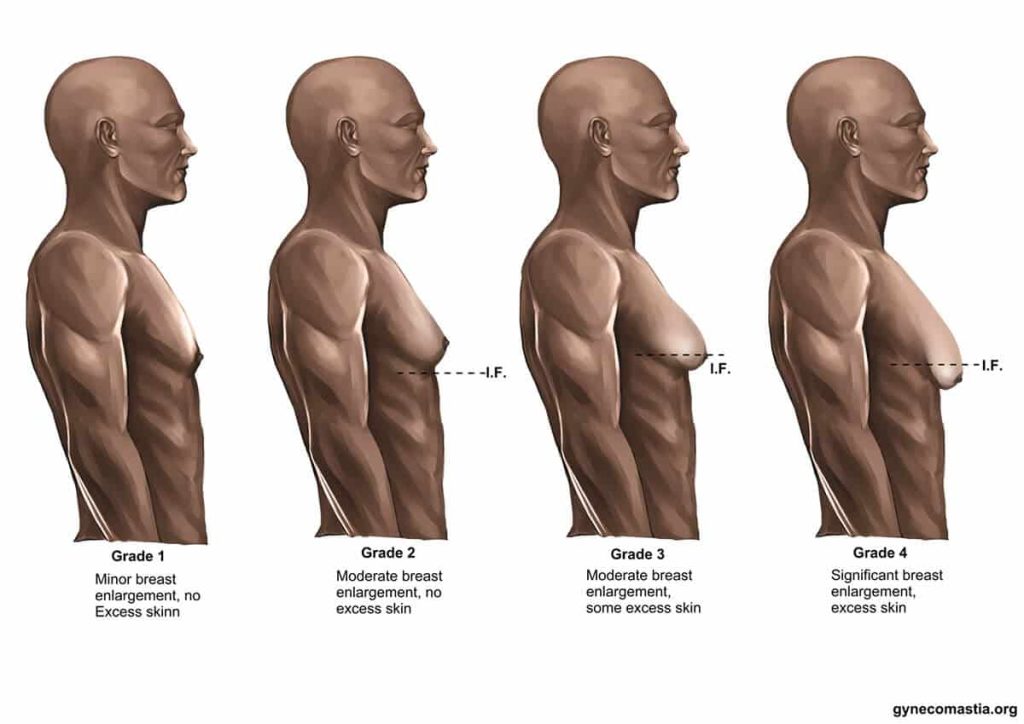
Why Men Are Opting for Gynecomastia Surgery
Men seek gynecomastia surgery for various reasons, often stemming from the physical, emotional, and social impact of having enlarged breasts. Below are the detailed reasons why men opt for this procedure:
- Physical Discomfort
Enlarged breast tissue in men can cause pain, tenderness, or discomfort, particularly during physical activities. This is especially common in men who engage in sports or intense exercise, where movement can irritate the chest area. Pain, discomfort and tenderness are more experienced by patients who developed steroid induced gynecomastia .
Men with gynecomastia may find it uncomfortable to perform exercises like running, swimming, or weightlifting due to excessive breast tissue causing chafing or awkward movement.
- Self-Esteem and Confidence Issues
Gynecomastia can lead to a distorted body image, as men may feel that their chest looks too feminine. This can significantly affect their self-esteem, leading to feelings of embarrassment or shame about their appearance. Men with gynecomastia often find it difficult to wear certain types of clothing, such as tight shirts or t-shirts, because the contours of their chest are more visible. Many resort to loose or baggy clothing to conceal their chest, which can restrict their wardrobe choices and affect their personal style.
Public situations where the chest is exposed, such as going to the beach, swimming, or changing in locker rooms, can be especially anxiety-inducing. Men with gynecomastia often avoid these settings altogether, which can limit their social and recreational activities.
- Psychological Impact
Gynecomastia can cause significant psychological distress, leading to feelings of embarrassment, depression, or anxiety. Some men may develop a negative self-perception, which can result in low self-esteem and feelings of inadequacy.
Due to the stigma or teasing associated with having enlarged breasts, men with gynecomastia may withdraw from social situations, avoid intimate relationships, or refrain from engaging in activities where they feel their condition could be noticed or judged.
- Hormonal or Health-Related Concerns
In some cases, gynecomastia results from hormonal imbalances, such as low testosterone or elevated estrogen levels. Men may seek surgery as a way to correct the visible effects of these imbalances, even after treating the underlying hormonal issues.
Gynecomastia can be caused by certain medications, such as steroids, anti-androgens, or drugs for treating prostate conditions. For men who have discontinued the offending medications but still have residual breast tissue, surgery can be the most effective way to correct the problem.
- Cosmetic Concerns
One of the main reasons men pursue gynecomastia surgery is to achieve a flatter, more masculine chest contour. This can help them feel more confident and comfortable with their appearance, particularly in situations where their body is on display.
- Impact on Personal Relationships
Many men with gynecomastia feel self-conscious during intimate moments with their partners. Fear of judgment or embarrassment about their chest can cause them to avoid intimacy, which can negatively affect their romantic relationships.
Gynecomastia can sometimes lead to teasing, bullying, or negative comments from peers. This social stigma can severely impact a man’s confidence and his ability to interact comfortably with others.
- Long-Term Satisfaction
For many men, diet and exercise do not resolve gynecomastia, especially if it is caused by glandular tissue rather than fat. Men who undergo gynecomastia surgery often report a significant improvement in their quality of life. They feel more comfortable in their skin, more confident in social situations, and are generally more satisfied with their appearance.
- Career-Related Reasons
Men in professions that emphasise physical appearance, such as modelling, bodybuilding competition, acting, or athletics, may feel pressured to undergo gynecomastia surgery to maintain a certain physique. In such careers, looking fit and toned is often crucial to success, prompting men to seek surgery to achieve their professional goals.
How to treat Gynecomastia (Enlarged Breast)
Non-Surgical Options for Gynecomastia
In some cases, men may attempt non-surgical approaches to manage gynecomastia, particularly for less severe cases or pseudo-gynecomastia. These include:
Pressure Garments
Special compression vests can help flatten the chest and improve the appearance under clothing. However, this is a temporary solution and does not reduce the breast tissue.
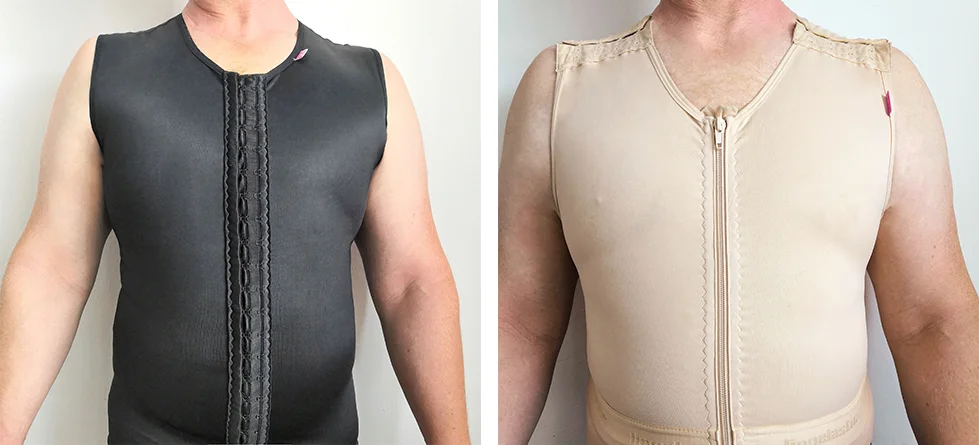
Weight Loss and Exercise
Fat reduction through diet and exercise may improve the appearance of pseudo-gynecomastia but won’t affect true gynecomastia caused by glandular tissue growth.
Medications
Hormonal imbalances and oestrogen receptors may be optimised with medications which need to be taken under supervision.
Surgical Options for Gynecomastia
- Liposuction: Ideal for pseudo-gynecomastia or cases with excess fatty tissue, liposuction removes fat deposits through small incisions. It is less invasive and results in minimal scarring. It is also used in mixed type of gynecomastia.
- Excision Surgery: For true gynecomastia, where glandular tissue is present, excision surgery is necessary. This technique removes the glandular tissue and, in some cases, excess skin.
- Combination of Liposuction and Excision: In many cases, a combination of liposuction and excision is used to achieve optimal results, especially for moderate to severe gynecomastia.
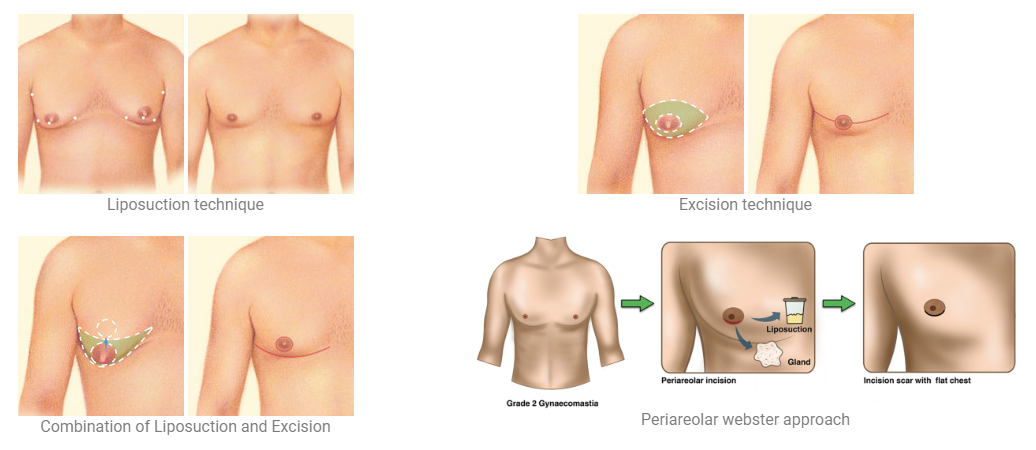
Gynecomastia Correction (Male Breast Reduction) at MACS Clinic
Here’s a detailed guide on how you can easily schedule your appointment with Mr. Shailesh Vadodaria, a senior consultant plastic surgeon at MACS Clinic and what to expect during the consultation process.
- Choose Your Preferred Contact Method:
You can reach out to us through any of the following convenient methods:
* Phone: Call us at 020 7078 4378.
* WhatsApp: Send a message to 07792 648 726.
* Email: Contact us at enquiries@macsclinic.co.uk.
* Online Contact Form: Fill out your details on our contact form.
- Provide Your Details:
When contacting us, be sure to include:
* Your full name.
* Your preferred method of contact (phone number or email).
* A brief description of the procedure you are interested in, such as Gynecomastia Correction (Male Breast Reduction).
- Scheduling Your Consultation:
After receiving your inquiry, our staff will get in touch with you to offer a complimentary/free video consultation or face-to-face consultation at the clinic.
- Receive Additional Information:
Before your consultation, we will provide you with a detailed information factsheet about the Gynecomastia Correction (Male Breast Reduction) procedure. This document will give you a comprehensive overview of the procedure, helping you understand what to expect.
- Attend Your Consultation:
During the consultation with Mr. Shailesh Vadodaria, he will thoroughly explain all aspects of the Gynecomastia Correction (Male Breast Reduction) procedure. He will discuss the potential risks, complications, and post-operative care. Mr. Vadodaria will also present representative before and after photos/videos of previous Gynecomastia Correction (Male Breast Reduction) patients.
- Receive Your Procedure Estimate:
Following the consultation, the MACS Clinic team will send you a detailed cost estimate. This will help you plan accordingly for your procedure.
Understanding the Costs
The cost for Gynecomastia Correction (Male Breast Reduction) procedure at MACS Clinic varies depending on the specifics of your case:
* Gynecomastia Correction (both side) under local anaesthetics: From £2000
* Gynecomastia Correction (both side) under local anaesthetics: From £3500 to £5500
These prices may vary based on factors such as the type of anaesthesia used and your choice of clinic or hospital. The final cost estimate will be provided to you after your consultation with Mr. Shailesh Vadodaria.
Which technique Mr. Shailesh Vadodaria uses to perform the Correction of Gynecomastia?
Mr Vadodaria uses the spectrum of procedures for correction of all types of gynecomastia.
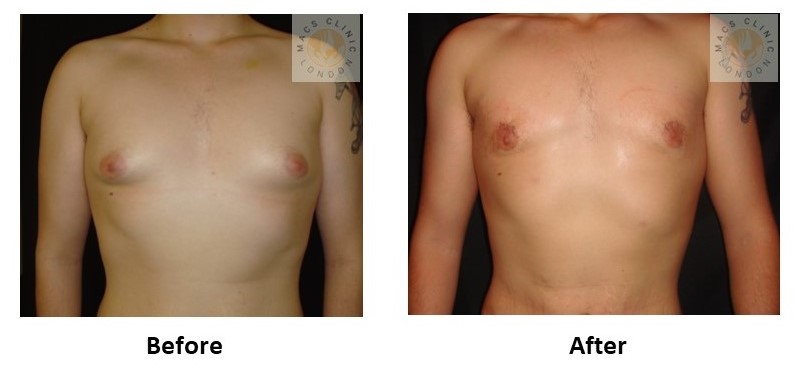

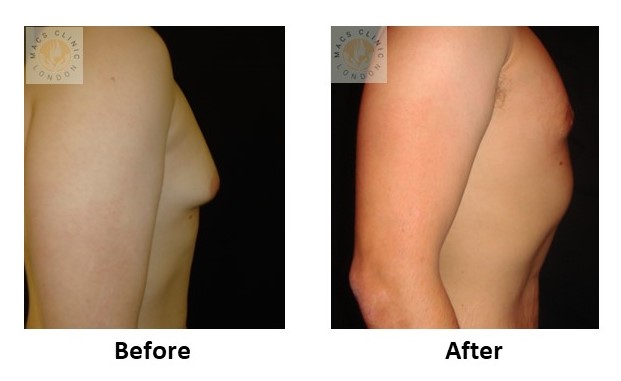






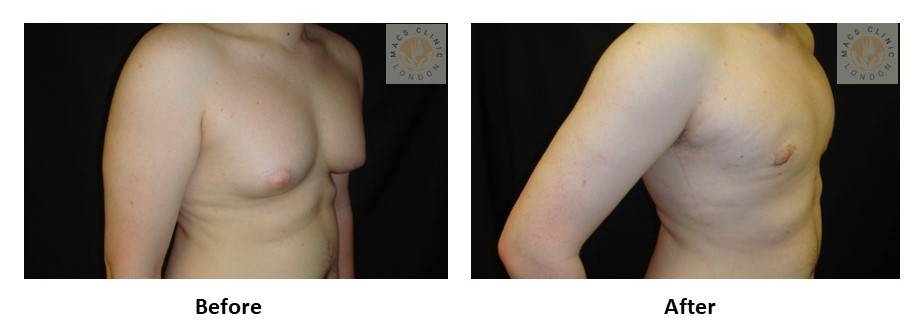

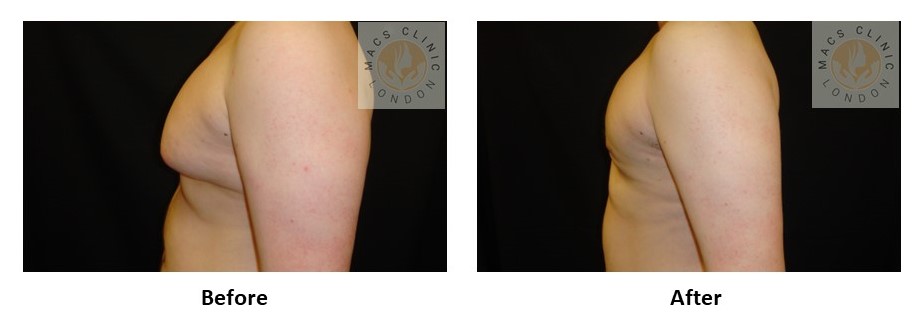













What to Expect on the Day of Your Gynecomastia Correction (Male Breast Reduction) Surgery at MACS Clinic?
Before your surgery begins, you will complete the consent process. This is an important step to ensure you fully understand the treatment, including its potential risks and benefits. Mr. Shailesh Vadodaria and his team will be available to answer any last-minute questions you may have.
Mr. Vadodaria typically performs Gynecomastia Correction (Male Breast Reduction) under local anaesthesia. This means you will be awake but the area will be numbed, allowing you to remain comfortable and pain-free during the procedure. The entire procedure is performed as a day case. The surgery typically takes about 1 to 2 hours to complete, depending on the complexity of the case. In some instances, the procedure will combine both liposuction and glandular tissue excision to achieve the desired result and can be done under general anaesthesia or local anaesthesia with sedation, depending on the case.
After the procedure, you will be provided with prescriptions for painkillers and antibiotics to manage any discomfort and prevent infection. These may be in tablet or ointment form.
You will receive a comprehensive post-operative information leaflet. This guide includes detailed instructions on how to care for your chest during the recovery period and signs of complications to watch for.


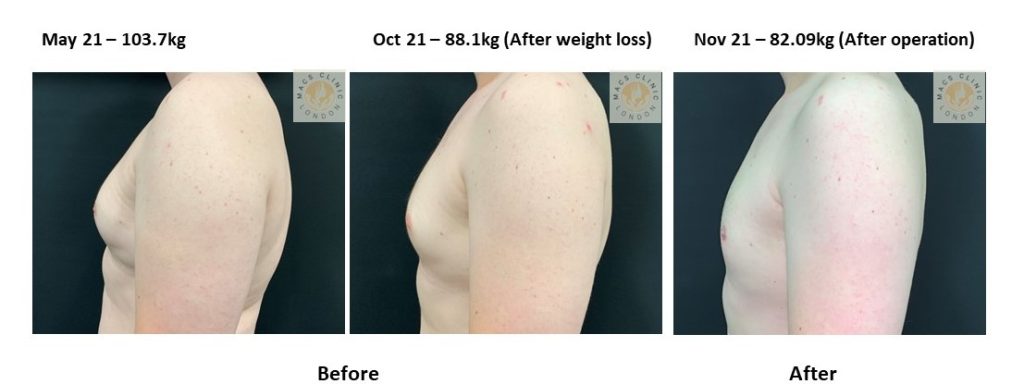
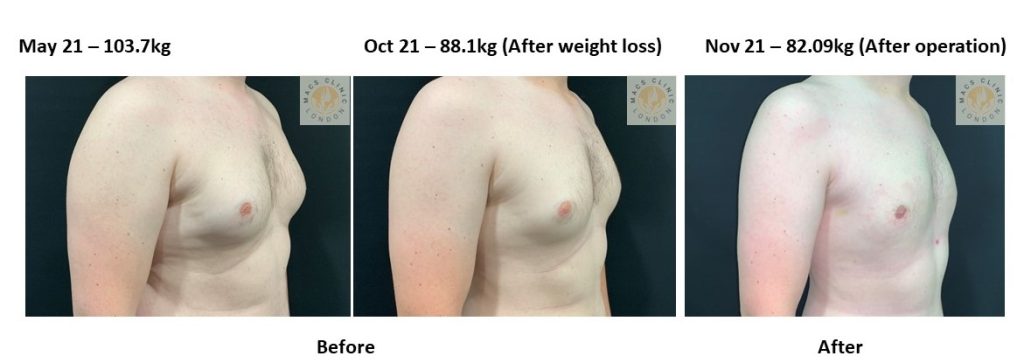
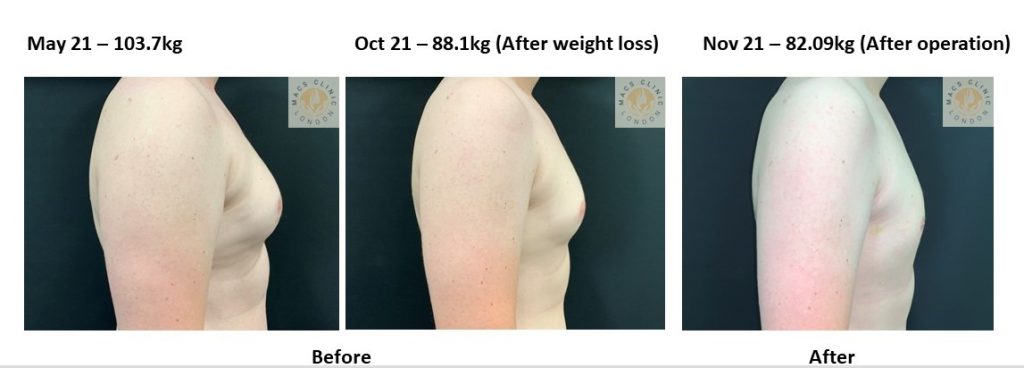
What post-operative care you need to take after Gynecomastia Correction (Male Breast Reduction) Surgery at MACS Clinic?
After undergoing gynecomastia correction surgery, all patients are advised to wear a pressure vest for six weeks to help with reducing swelling and shaping the chest. Antibiotics and painkillers are prescribed for 5 to 7 days to prevent infection and manage any discomfort. Additionally, Arnica homeopathic pills are recommended for two weeks to help minimize bruising and promote healing.
Patients are instructed to avoid strenuous activities like weightlifting, upper body exercises, swimming, rock climbing, and contact sports for at least four weeks, especially when the open excision technique is used. A wound check with Mr. Vadodaria or his team is scheduled within 7 to 10 days, followed by a follow-up visit after six weeks to ensure proper recovery.
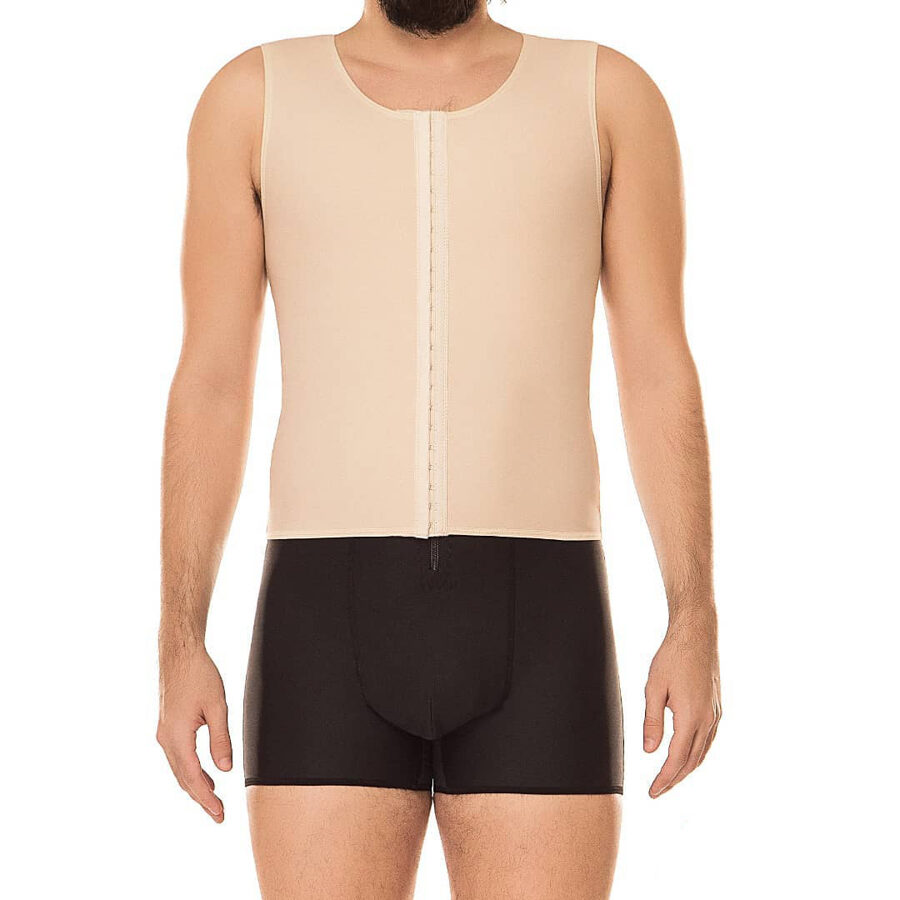
What are the risks of Gynecomastia Correction (Male Breast Reduction) procedure at MACS Clinic?
Although rare, potential risks and complications associated with the Gynecomastia Correction (Male Breast Reduction) includes scarring, infection, bleeding, under correction or over correction, asymmetry, wound healing problems, soft tissue death, tethering of nipple, surface irregularity, temporary swelling, bruising and discolouration, deep veined thrombosis (because of the general anaesthetic), pulmonary embolism, fat embolism, internal injury, death etc.
Revision Surgery at MACS Clinic
In the rare event that a revision surgery is necessary, Mr. Shailesh Vadodaria waives his surgeon’s fee, although the theatre cost remains payable. The revision rate for this procedure at our clinic is less than 1 %.
Additional Resources
For more detailed information about Gynecomastia Correction (Male Breast Reduction), you can visit the following resources:
* MACS Clinic Gynecomastia Correction (Male Breast Reduction)
– https://gynecomastia-surgery.org.uk/
* YouTube Video Playlist on Gynecomastia Correction – https://www.youtube.com/watch?v=nhgwIPjNiLg&list=PL_FxiihJDtcneqQnp9qkJeclzY4EkyILO
Contact Us
If you have any questions or would like to schedule a consultation, please contact MACS Clinic at:
* Phone: 020 7078 4378
* WhatsApp: 07792 648 726
* Email: enquiries@macsclinic.co.uk
Before and After Photos
- Liposuction assisted Bilateral Gynecomastia correction performed by Mr. Shailesh Vadodaria under general anaesthetics

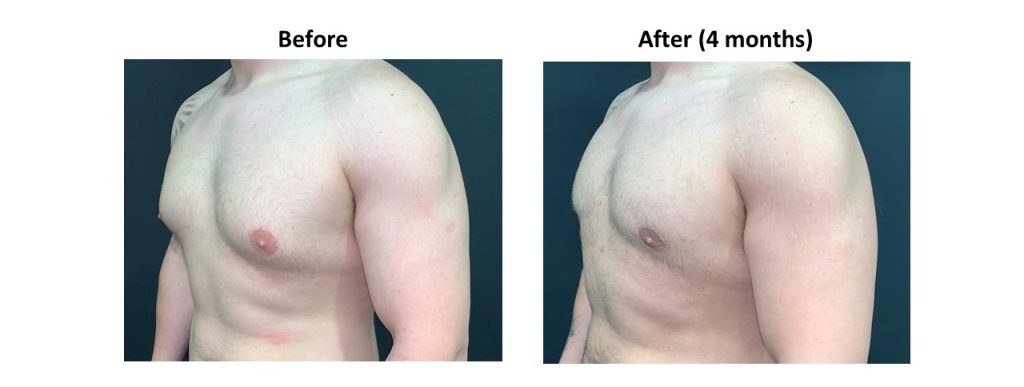
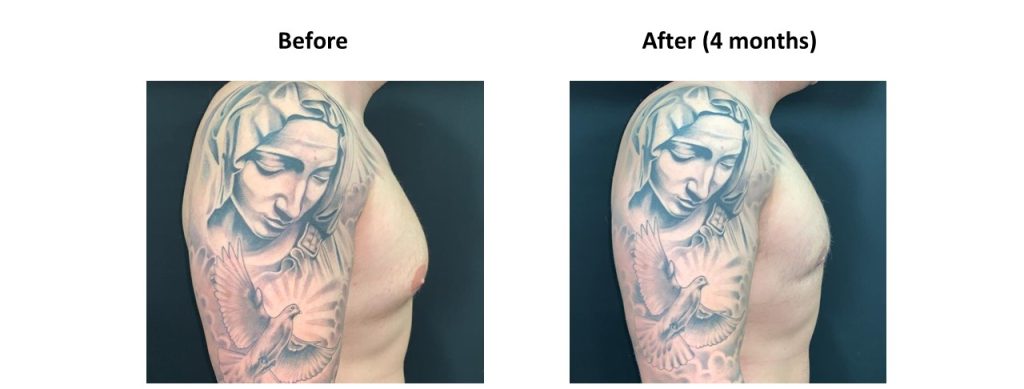
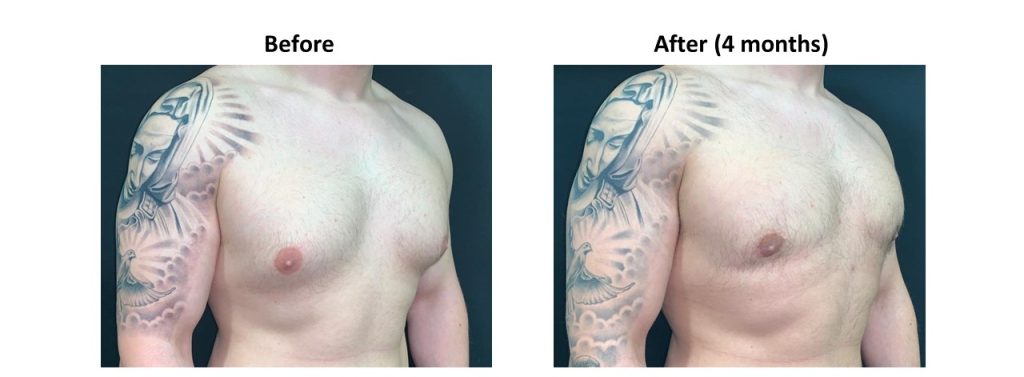
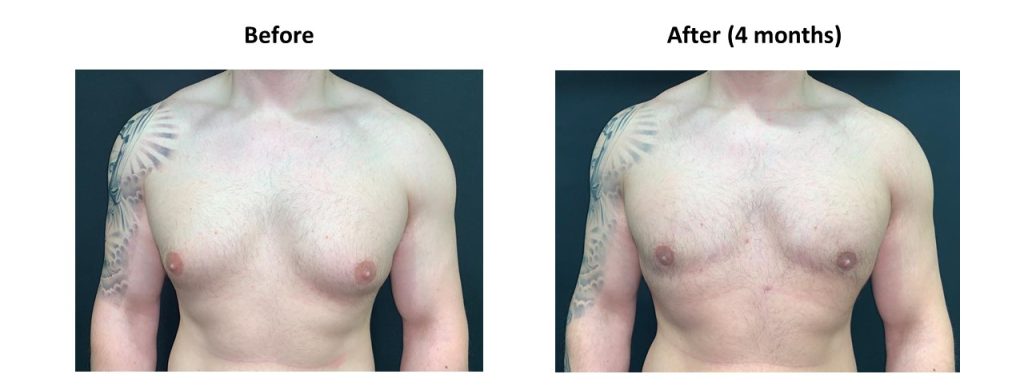
2. Bilateral gynecomastia correction performed under local anaesthetics by Mr. Shailesh Vadodaria


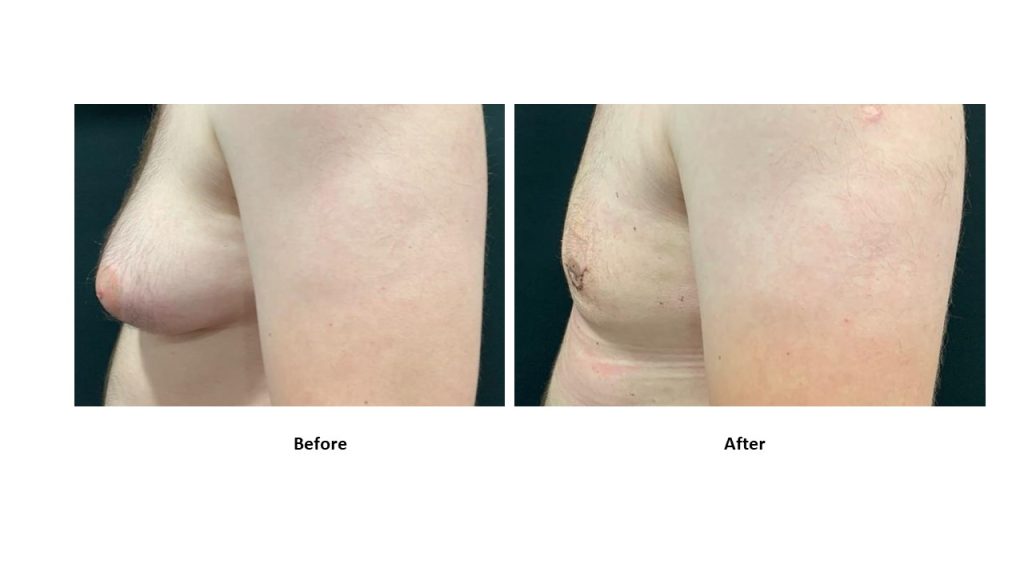
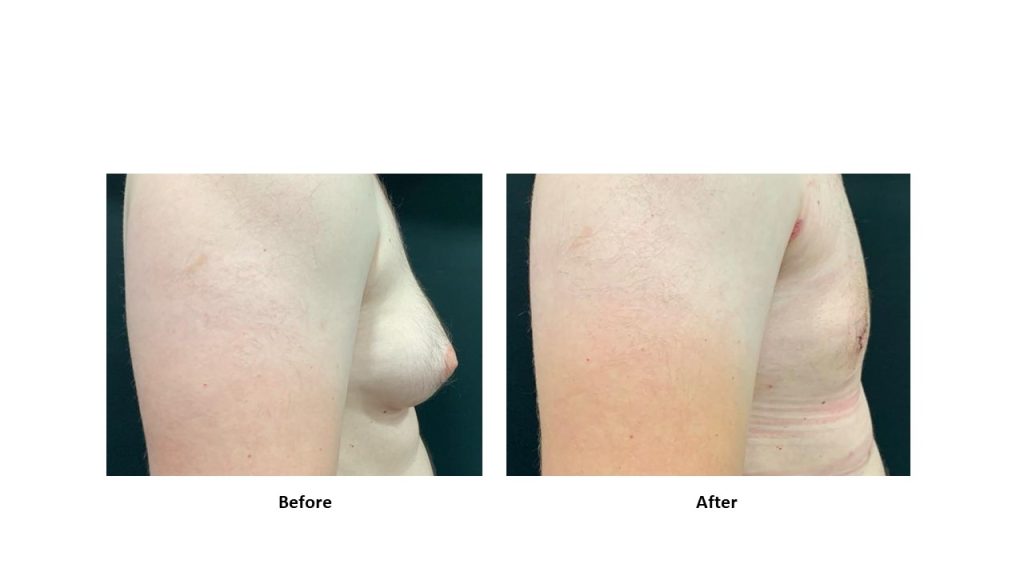

Comments (3)
Shailesh
Thank you very much for your feedback. If you provide us your email address or WhatsApp details, we will be sending you our regular educational articles and blogs on a weekly basis.
record
This post іs invaluɑble. When can I find out more?
Smruti
Very nice blog